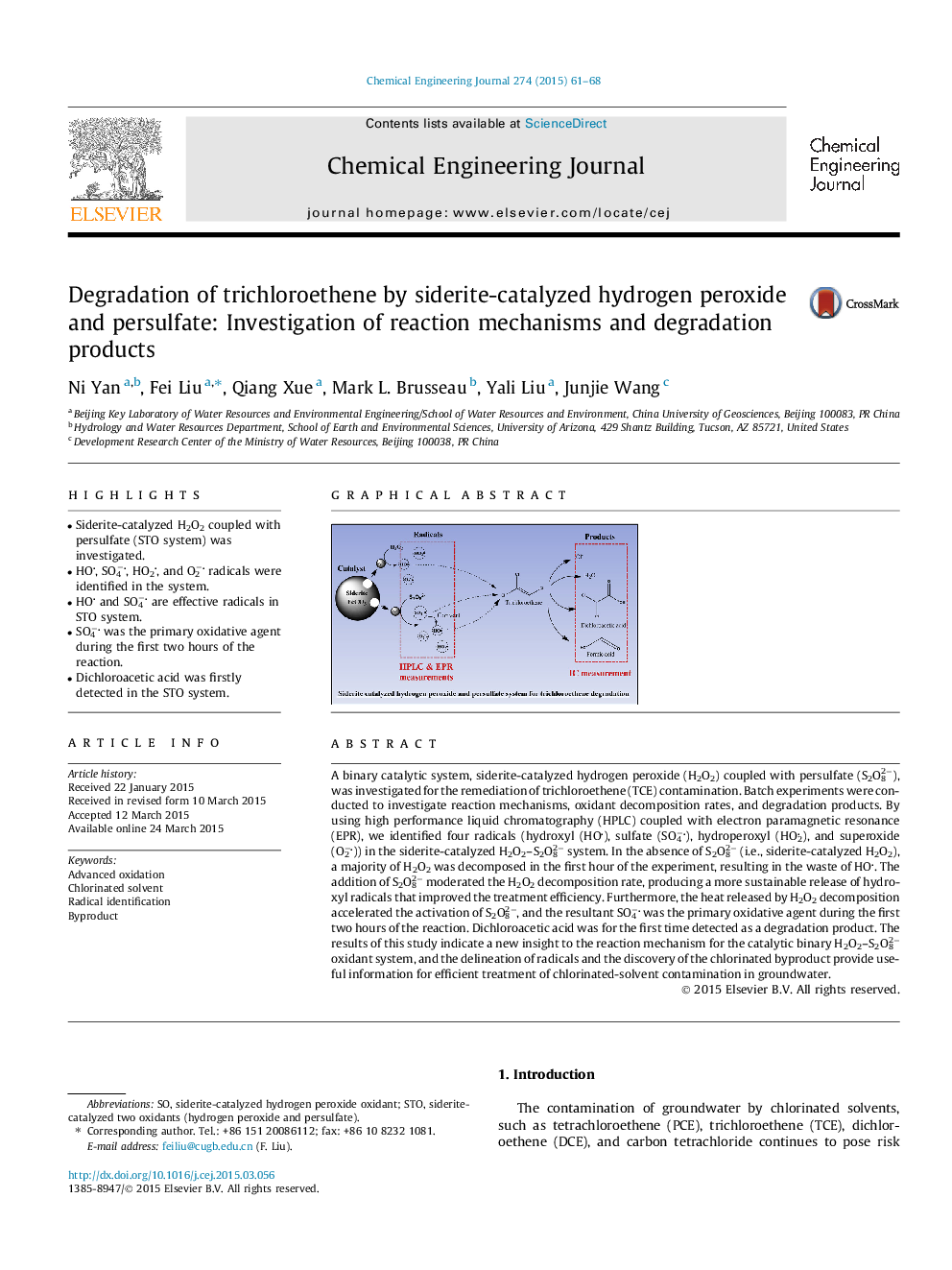| Article ID | Journal | Published Year | Pages | File Type |
|---|---|---|---|---|
| 146384 | Chemical Engineering Journal | 2015 | 8 Pages |
•Siderite-catalyzed H2O2 coupled with persulfate (STO system) was investigated.•HO, SO4−, HO2, and O2− radicals were identified in the system.•HO and SO4− are effective radicals in STO system.•SO4− was the primary oxidative agent during the first two hours of the reaction.•Dichloroacetic acid was firstly detected in the STO system.
A binary catalytic system, siderite-catalyzed hydrogen peroxide (H2O2) coupled with persulfate (S2O82−), was investigated for the remediation of trichloroethene (TCE) contamination. Batch experiments were conducted to investigate reaction mechanisms, oxidant decomposition rates, and degradation products. By using high performance liquid chromatography (HPLC) coupled with electron paramagnetic resonance (EPR), we identified four radicals (hydroxyl (HO), sulfate (SO4−), hydroperoxyl (HO2), and superoxide (O2−)) in the siderite-catalyzed H2O2–S2O82− system. In the absence of S2O82− (i.e., siderite-catalyzed H2O2), a majority of H2O2 was decomposed in the first hour of the experiment, resulting in the waste of HO. The addition of S2O82− moderated the H2O2 decomposition rate, producing a more sustainable release of hydroxyl radicals that improved the treatment efficiency. Furthermore, the heat released by H2O2 decomposition accelerated the activation of S2O82−, and the resultant SO4− was the primary oxidative agent during the first two hours of the reaction. Dichloroacetic acid was for the first time detected as a degradation product. The results of this study indicate a new insight to the reaction mechanism for the catalytic binary H2O2–S2O82− oxidant system, and the delineation of radicals and the discovery of the chlorinated byproduct provide useful information for efficient treatment of chlorinated-solvent contamination in groundwater.
Graphical abstractFigure optionsDownload full-size imageDownload as PowerPoint slide
